UVA’s Slavery and Legacies Curriculum Expands
We continue to run AMST 1050, “Slavery and Its Legacies at UVA” every fall semester and have now created AMST 1060, “The Aftermath of Slavery at UVA,” which ran for the first time in spring 2020. PCSU and PCUAS Co-Chair Kirt von Daacke continues to teach both courses, co-teaching the new course with PCUAS Program Officer Ashley Schmidt. Thus, the curriculum has expanded to include a two-semester introductory sequence examining slavery and racism locally. The first iteration of AMST 1060, “The Aftermath of Slavery at UVA,” had teams working in teams to create twenty new stops for an expanded history tour app. This grew out of the PCSU Enslaved African Americans Walking Tour Map which became one of the first tours on a new UVA library app. Unfortunately, the pandemic kept the students at home and the library closed starting in early March, but the students nonetheless created in difficult conditions what will ultimately become a new twenty stop tour about UVA’s history after 1865. A PCUAS partnership with the University Guides in 2021 hopes to complete the work began by our students last year.
Our curricular offerings and creativity in thinking about how to educate students about the centrality of slavery and racism to both United States history and to American university history more particularly continues to expand. As historian Craig Steven Wilder noted in his 2013 Ebony and Ivy: Race, Slavery, and the Troubled History of America’s Universities, American colleges were not innocent or passive beneficiaries of conquest and colonial slavery…The academy never stood part from American slavery—in fact, it stood beside church and state as the third pillar of a civilization built upon bondage.” That powerful truth extends to the long-reaching legacies of the era of slavery that continued to shape universities for at least another century after the general emancipation and continue to shape our world today.
Thinking about how to creatively move beyond content delivery to experiential learning and evocative experiences in the classroom, PCSU and PCUAS Co-Chair Kirt von Daacke, along with Assistant Vice President Nicole Eramo and Architecture professor Elgin Cleckley, designed and taught a boldly creative January term course, AMST 2559/ARCH 2500,”The Good, the Bad, and the Ugly: Designing America’s Difficult Past.” The course was born in Nicole Eramo’s work creating a Meriwether Lewis Institute student trip to Montgomery and Selma. Upon her return from that domestic study abroad experience, she sat down with Kirt von Daacke and Elgin Cleckley. Together, they planned a similar January Term class experience that would take students on a loop from Charlottesville to Greensboro, Atlanta, Montgomery, Jackson, Louisiana, and Memphis, visiting historic sites, museums, and universities (Universities Studying Slavery member institutions) as a way to think creatively about the challenges of presenting difficult histories in public. Once again, the pandemic forced them to make changes–the result fantastic in its own way.
The new course, working in the spirit of that road trip’s guiding principles, trained students in empathetic practices, public history, and design thinking. Working in teams with ten external clients–all Universities Studying Slavery (USS) member institutions–they proposed the redesign of a space or place at the external school. One client commented: “That was really fantastic. Their idea is smart and beautifully executed, and they did such a good job of presenting their ideas…it was an honor to be a part of this.” Another client asked to bring the student team to their campus to do a public presentation of the project. We thank the USS schools that participated, and thank our amazing students for their incredible energy and intellectual output over such a short semester. We cannot wait to run this course again and hope to expand it so students from other schools can enroll, whether in its original road trip format or in the new remote format!
-Kirt von Daacke

